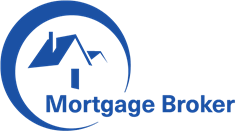What You Need to Know About a Mortgage
Mortgage is a type of loan used to purchase a home. The home itself is the collateral for the loan, meaning that if you don’t make your monthly payments, the lender can take possession of the property and sell it to recoup their losses. A mortgage is probably the largest financial obligation most people will ever assume, and it’s important to understand all of the details before you sign on the dotted line.
A conventional mortgage is a loan from a bank, credit union or other private lender. It’s also the most common type of mortgage. It’s not backed by the federal government and isn’t insured by an agency like the FDIC. A mortgage loan is generally based on the borrower’s creditworthiness and the lender’s assessment of their ability to repay the debt.
Borrowers typically apply for a mortgage loan after making an offer on a home they’re interested in buying. They’ll need to provide proof of income, employment, assets and a credit report to determine eligibility. If a co-borrower will be contributing to the payment, lenders will usually review both of their finances. A down payment is often required as well. The amount of the down payment will impact how much the monthly mortgage payment is.
During the loan process, an underwriter will review the loan application with a fine-tooth comb to ensure that all information is accurate. They may request additional documentation from you such as recent pay stubs, tax forms and banking statements. If something in your financial history raises a red flag such as missed payments or high credit utilization, the underwriter will likely ask for a letter of explanation to help clarify the situation.
The lender will then conduct an appraisal of the property to assess its value. This is especially important because the lender won’t allow you to borrow more than the home is worth. If the appraiser determines that the property isn’t worth what you’re paying for it, the lender will deny your mortgage application.
Once approved, your lender will send you a letter stating how much you are borrowing and the terms of repayment. It will include a loan term (typically 30 years), interest rate, fees and points. The annual percentage rate (APR) is a broad measure of the cost of a mortgage, which incorporates both interest and fees. Comparing the APRs of different lenders is a good way to find the best mortgage for your needs.
A lender may charge an origination fee, which covers various costs associated with the processing of your mortgage. These costs can include administrative fees, underwriting fees and attorney’s fees. A lender will also typically require that you pay for title insurance and an appraisal. You’ll need to pay for property taxes and homeowner’s insurance as well, but these expenses can be rolled into your mortgage payment. After you’ve repaid your mortgage, your servicer will send you a release of lien paperwork. This will confirm that you’ve paid off your mortgage in full and the lender no longer has a lien on your home.
